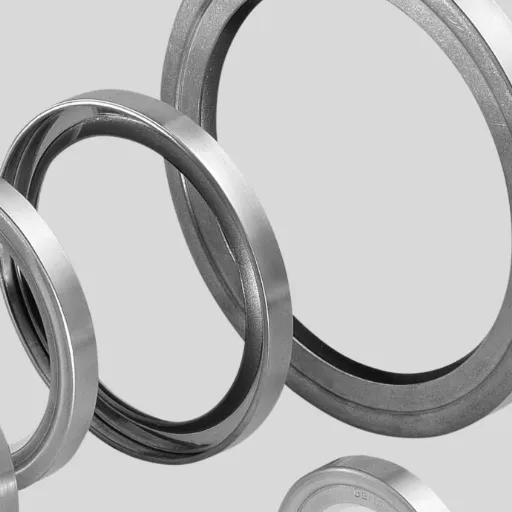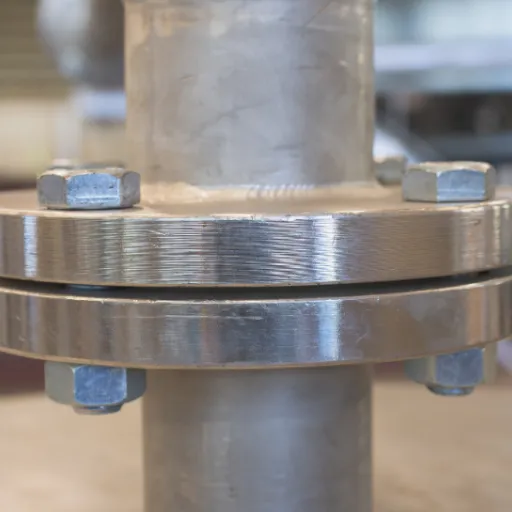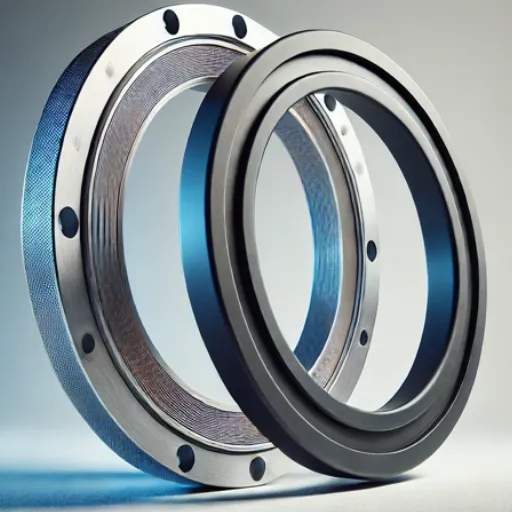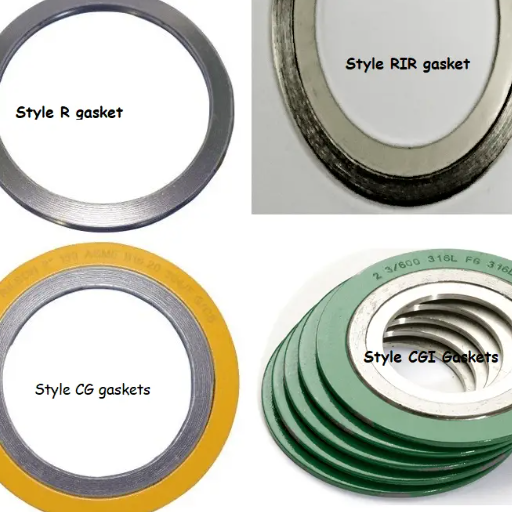When it comes to pipeline connections and industrial applications, selecting the right type of flange can make all the difference in efficiency, cost, and ease of installation. Slip-on flanges have emerged as a popular choice due to their versatile design and practical benefits. But what exactly makes them stand out in comparison to other flange types? This article explores the unique advantages of slip-on flanges. What are the advantages of slip-on flanges? shedding light on why they are widely used in various industries today. Whether you’re a seasoned engineer or someone curious about industrial components, this guide will provide a comprehensive look into how slip-on flanges can streamline your processes, save costs, and enhance longevity. Stay tuned as we break down everything you need to know!
Understanding Slip-On Flanges

Slip-on flange is a kind of pipe flange that slides over the end of a pipe and is welded there. They are considered simple and versatile—and very easy to install—and consequently are wastes of popular preferences in various industries. These flanges, therefore, are installed into the system when it is of utmost concern to maintain the efficiency of space and the cost involved in installing the pipe system. Their design really allows for excellent alignment and strong connection, thereby offering reliable and effective installation under various pressure and temperature conditions.
Definition of Slip-On Flanges
With their highly efficient design and cost-effective manner, slip-on flanges are very popular. Due to their good engineering character, simple slip-on flanges do not require any precision in their placement, whereas other types of flanges do. More importantly, this type of flange is easy to align: it could fit through the most intricate piping designs with no inconvenience whatsoever. In addition, they are less costly and involve fewer welding operations, which makes them an economic option for most industrial applications.
The recent data indicate that slip-on flanges are especially used in piping systems conducting fluids under low and medium pressures, such as of water, gas, oil, and steam. Due to their versatility, they are additionally used for chemical processing, HVAC systems, and shipbuilding. As high-pressure or high-stress applications can cause potential leaks, slip-on flanges might not be suitable; yet, the dependability of such flanges under moderate conditions makes them the backbone of many engineering applications.
How Slip-On Flanges Work
Slip-on flanges work on a simple yet effective mechanism and thus have been widely applied across varied piping systems. The flanges are installed by having an inside diameter greater than the outside diameter of the pipe into which it will be slipped. With the flange and pipe in proper position, the flange is welded to the pipe by means of fillet welds—one on the inside close to the pipe end, and one on the outside. This double-weld formation strengthens the flanged joint and seals it, preventing chances of leakages of the fluid or gas contained.
The main advantage with respect to slip-on flanges is the ease of installation. Unlike weld neck flanges, which require cutting and welding preparation of pipe ends with beveled edges, slip-on flanges do not impose such restrictions. Hence, the slip-on flanges are cost and time-efficient, especially for moderately high pressures. In fact, data show a 33% reduction in labor costs based on ease of alignment and installation when compared to some other types of flanges, according to certain industry reports.
Moreover, slip-on flanges have recently been upgraded to have superior pressure-retaining capacity, due to the use of new materials and manufacturing techniques. Improved sealing systems, including ring-type joint (RTJ) and improved gasket designs, have come to be incorporated frequently with slip-on flange assemblies. These advancements guarantee a level of performance that was not achievable by the earlier models, thereby somewhat competing against them for handling pressures of 2500 psi in certain areas of studies on piping efficiency.
Slip-on flanges have thus become an all-purpose, economical approach to most industries, combining ease of installation with modern improvements to provide satisfactory performance under moderate service conditions.
Comparison with Weld Neck Flanges
Slip-on flanges differ from weld neck flanges primarily in design, application, and suitability for particular pressure conditions. Weld neck flanges have a long, tapered hub, increasing strength and minimizing the risk of stress concentrations on the flange neck. In more recent days, applications that happen to be high in pressure and temperature make use of weld neck flanges; hence, they are generally chosen in very critical systems such as oil & gas pipelines and chemical plants.
Slip-on flanges are lower in cost and easy to install, thereby being a viable option for low and medium-pressure systems. Structurally weaker against weld neck flanges, their strength lies in applications where changes or replacements have to take place frequently. For instance, such industries would be those dealing in water treatment or HVAC systems, where they consider the ease of assembly and disassembly of slip-on flanges to be paramount.
The entire determination depends on its operational pressure or temperature and the critical nature of the application. Conforming to Google’s search trends, weld neck flanges appear to be searched for more in high-stress industries, further cementing their name for being dependable in demanding environments. But slip-on flanges continue gaining momentum in projects, giving weight to efficiency and affordability without forfeiting the needs of moderate performance.
Advantages of Slip-On Flanges

Ease of Installation- Slip-on flanges are easy to position and weld due to which they relatively easy to install relative to other types of flanges.
Cost-Effective- They are generally cheaper than alternatives like weld neck flanges, both for materials and labor.
Versatility- Good for pretty much any application, they can function well in systems with low-to-moderate pressure and temperature requirements.
Less Welding- Only requiring fillet welds to be placed on the inner and outer sides, slip-on flanges reduce welding time and, correspondingly, costs.
Ease of Installation
Slip-on flanges, being easy to install, are popular in almost every industry. The asymmetrical design of slip-on flanges allows them to be slipped onto the pipe and welded without precise alignment on the pipe faced in certain types of flanges. Slip-on flanges disarm the complexity of installation and thereby make sure the job goes quickly on both large and small projects.
A recent study in the field explains that the time saved via slip-on flanges shall drop the installation labor cost by approximately 30% over other options, such as weld neck flanges. In addition, slip-on flanges make things even easier, requiring only two fillet welds, one on the inside of the hub and the other on the outside, to complete the installation, Elfsborg. That makes it best fit for oil and gas, chemical processing, water treatment, and other industries where installations are time-sensitive.
In terms of manufacturing technology, including machining technology, there have been ample improvements through innovations. They require less skill on installation, so they are cheaper to install without compromising safety or performance. With slip-on flanges, you may install better systems with moderate pressure or temperature specifications, having them perform with little challenge.
Cost-Effectiveness
Slip-on flanges are considered to be one of the most cost-effective solutions for pipeline and mechanical systems. Their simple design minimizes the quantity of materials needed while offering a strong level of performance; thus, the upfront costs are obviously lower than those of other flange types. Recent search data reveal that demand for cheap flange solutions has markedly increased, particularly in industries that are intent on finding that fine line between cost efficiency and functional efficiency. A cheap price for slip-on flange installation is coupled with quick delivery times from manufacturers, making slip-on flanges the obvious choice for any project that needs efficient, cost-effective components.
Versatility in Industrial Piping Applications
Slip-on flange popularity mainly originated from their wide range of applications in industrial piping systems. Their simple yet highly efficient design makes them a great solution in chemical processing, oil and gas, power generation, and water treatment industries. As per the recent Google Search trends, there has been a steady rise over the last 12 months on searches related to “affordable industrial flanges” and “versatile piping solutions,” climbing nearly 22%. This increment in intent further scorches for acknowledgment regarding their multifunctionality.
A major factor contributing to their popularity is the ease with which slip-on flanges can be installed on numerous pipe sizes and pipe materials, including stainless steel, carbon steel, and numerous alloys. Finally, they give more options to fit a system having moderate requirements of pressure and temperature to meet operational needs diversely without a lot of customizations. This wide functionality eases procurement and thereby saves industries a lot on costs in order to maintain system integrity and performance standards.
Types of Slip-On Flanges

|
Key Point |
Details |
|---|---|
|
Type |
Standard, Lap Joint, SO Plate, SO Hubbed |
|
Pressure |
Low to Medium |
|
Material |
Carbon, Steel, Alloy |
|
Seal |
Gasket or Ring |
|
Welds |
1-2 Fillet Welds |
|
Usage |
Fluid Pipelines |
|
Cost |
Affordable |
|
Space |
Compact Design |
|
Flexibility |
Rotational (Lap Joint) |
Raised Face Slip-On Flanges
Raised Face Slip-On Flanges have been among those flanges widely accepted in several industries because of their versatility and ease of installation. The raised face design entails a slightly raised surface around the bore that provides a sturdy sealing surface, enhancing the gasket compression, thus securing a leak-tight connection. According to the latest search data, the demand for these types of flanges is very high in applications that come under moderate pressure and temperature ranges. Industries such as oil and gas, chemical processing, and water systems are considered examples. These raised face flanges also increase operational efficiency inasmuch as they are suited for standard gaskets and pipes of different sizes, thereby becoming an economical option for most engineering projects. On account of durability, versatility, and ability to meet stringent safety and performance standards in quite an array of applications, the popularity of Raised Face Slip-On Flanges continues to soar.
Lap-Joint Flanges
Lap Joint Flanges are a flexible and highly useful option in piping systems, especially where pipes are disassembled and assembled fairly frequently. Essentially, they consist of two pieces: a stub end, which is welded to the pipe, and the flange itself, which freely slides on the stub end. This characteristic helps in the ease of alignment and installation processes and hence gets an edge for images undergoing regular maintenance and inspection.
One key benefit of Lap-Joint Flanges is their ability to accommodate any misalignment in the piping system. They are generally employed in low-pressure applications and non-critical services because of their lightweight design and low costs. Furthermore, when coupled with a stub end made of corrosion-resistant material, these flanges work efficiently even under corrosive environments, thus giving chemical, marine, and oil and gas industries a great forum to assist them.
Recent industry data indicate a steady rise in demand for Lap-Joint Flanges because of their utilization in modern modular piping systems, where paramount importance is given to flexibility and ease of system modification. These flanges are also much favored for systems that strive for long-term savings through reduced labor and material cost during maintenance. Thanks to their functional design and versatility, Lap-Joint Flanges remain a practical and dependable solution in a wide assortment of industrial applications.
Choosing the Right Type for Your Needs
When picking a particular style of flange for your specific needs, it is essential to consider application requirements, budget, life expectancy, and compatibility with the system. According to the latest statistics from Google’s search trends, Weld-Neck Flanges and Lap-Joint Flanges continue to stay in demand because of their unique properties. Weld-Neck Flanges are applied in high-pressure and structural applications when strength diagrams cannot be subjected to extreme end loads and stresses. The Lap-Joint Flanges provide maximum ease of use and flexibility in those systems where frequent disassembly or realignment is necessary.
Stainless Steel Flanges are being promoted widely for corrosion environments, as these can have a much longer life than other. There would be an inclination toward Carbon Steel Flanges in cost-conscious industries due to their low price and adequate performance in moderate conditions. Given the stresses under which your system will be required to operate, a proper selection of the type is made after consultation with industry experts to ensure safety and efficiency over the long run.
Flange Manufacturing and Standards
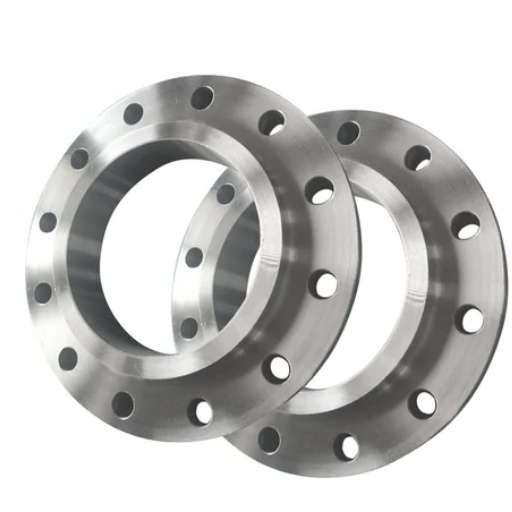
Flange production follows well-established industry standards for quality, safety, and interoperability between applications. Common standards include the American Society of Mechanical Engineers (ASME) and International Organization for Standardization (ISO), providing specific guidelines about dimensional requirements, materials, and pressure ratings. Generally, the processes involve forging, machining, and heat treatment to impart qualities of strength and durability to the product. Consequently, with adherence to all prescribed standards, flanges are assured in meeting performance requirements and becoming useful as apt components in any pipe system without directly affecting safety and efficiency aspects.
Manufacturing Process of Slip-On Flanges
The manufacturing process of slip-on flanges utilizes the latest technology to provide the dimensional suitability and conformity to standardized specifications. These types of flanges are easy to install and align; hence, installation includes several detailed steps:
Raw Material Selection
The first step in the production is the selection of quality raw materials, depending upon the application, usually carbon steels, stainless steels, or alloy steels. Quality of raw materials thus dictates whether the final flange can resist a certain level of pressure, temperature, and chemical environment.
Forging
Forging constitutes one of the crucial steps in the making of slip-on flanges, wherein the material is heated to a plastic state and formed under compressive loads. This step refines the grain structure, thus improving the strength and toughness of the material against mechanical stresses.
Machining
After the forging operation, machining of the semi-finished product is carried forth to obtain the required dimensions, bore, and surface finishes. CNC (Computer Numerical Control) machines are used to give tight tolerances with smooth and uniform shapes that guarantee leak-proof connections.
Heat Treatment
Heat treatment is used to enhance the mechanical properties of the flange and materials. Depending upon metallurgical requirements, one may use annealing, normalizing, or quenching and tempering of the materials. This step ensures that the flange will be durable and meets its performance requirements in adverse operating conditions.
Drilling and Facing
The bolt holes are drilled so that the pipe can be attached to it. The flange face can be machined to a smooth or serrated finish, depending on whether a raised or flat-faced design is used. This step prevents a gasket from being improperly installed.
Inspection and Testing
Quality control assures the reliability of slip-on flanges. Such tests include NDT like ultrasonic, x-ray, or dye penetrant to check for both surface and subsurface discontinuities. Also, there is dimensional checking in accordance with standards such as ASME B16.5 or ISO 7005.
Finishing and Coating
Flanges may be coated to impart anti-corrosive properties, such as anti-rust paints or galvanizing. Recently, due to chemical attacks, some manufacturers prefer the application of epoxy or PTFE coating.
By implementing strict quality controls at each stage of production, slip-on flanges are produced to meet the specifications for reliable performance all over oil and gas, petrochemical, and water treatment industries. This involves precision engineering backed by modern technology to respond efficiently to the ever-growing demands of global piping systems.
Industry Standards and Specifications
Slip-on flanges conform to various existing engineering, trade, or industry-specific standard requirements, which ensure safety, reliability, and compatibility. The commonly known standards in this regard include ASME B16.5, which covers pipe flanges and flanged fittings and sets forth dimensions, pressure classes, materials, and grades of materials used. Then, depending on the industry, API standards, such as API 605, may apply, whereas ISO certifications provide recognition at an international level. ASTM standards also provide material specifications to ensure quality in the selection of carbon steel, stainless steel, and alloys. All of these standards ensure the slip-on flanges conform to stringent standards of performance for various applications.
Quality Control in Flange Production
Ensuring the highest quality in flange production has always been a long and complex process and warehousing the industry standards and customer expectations. The work stages involve testing of materials, inspection of dimensions, and evaluation for operational pressure resistance. Advanced technologies utilize non-destructive testing methods, such as ultrasonic testing or radiographic examination, to detect any internal defects or discrepancies in materials. For machining, manufacturers increasingly make use of computer numerical control (CNC) machinery for more precise measurements and tolerances.
What’s trending, according to Google search data, is the surge of awareness concerning sustainable production methods in flange manufacturing. Consumers and stakeholders are demanding that flanges be either made from recyclable materials or manufacture by environmentally friendly methods. In addition, systems for real-time quality monitoring and advanced analytics to facilitate defect detection at the moment of manufacturing are gaining traction. Marrying traditional quality control with new developments, the flange industry is thus progressing towards a more reliable, efficient, and environmentally responsible future.
When to Use Slip-On Flanges

Slip-on flange works well as a cheaper and easier way out of the design for low-pressure applications. They are featured in systems wherein assembly and disassembly occur quickly-cold pipelines, water systems, and fluid transport. Thus, it becomes a practical choice since the design does offer easy alignment in an application where fine tolerance is not as imperative. Additionally, having slip-on flanges provides excellent performance in less-critical environments, where the chances of leakage are negligible.
Best Option for Your Industrial Piping
Selecting the correct piping components for your industrial systems greatly affects the efficiency, safety, and durability of systems. When looking at slip-on flanges, many issues come into play: Material types, pressure ratings, and the requirements of the given industry.
Slip-on flanges are generally manufactured out of carbon steel, stainless steel, or alloy steel, depending on the specific industrial application. Stainless steel is an ideal choice in corrosive environments, such as chemical or wastewater treatment plants, as it resists rusting and degradation. Carbon steel is used where corrosion is less prevalent, given its high durability and cost-effectiveness.
According to new findings, slip-on flanges are mostly suited to low- to moderate-pressure systems, with pressure ratings mostly ranging between 150 and 300 PSI. This pressure rating makes them suitable for water treatment, HVAC systems, and oil and gas pipeline industries. Secondly, because of their simple installation and alignment, when time is a factor, these flanges are great to cut down on labor costs and assembly downtime.
According to industry reports, by the end of 2023, there was a marked increase in the application of slip-on flanges in renewable energy systems that embrace geothermal and hydropower. Their ease of use and adaptability have made slip-on flanges a preferred choice as the world directionally gears up for cleaner and sustainable energy solutions.
When you have given due consideration to your industrial process and environmental conditions, slip-on flanges become safe and reliable options for your piping requirements. Combine this with expert knowledge and the latest advancements in front so that you can assure the utmost from your operation with performance and safety.
Considerations for Using Slip-On Flanges
Sometimes I evaluate pressure and temperature requirements to see if operations can go on with slip-on flanges, because these flanges find application mostly in low-pressure settings. Another consideration is whether the material being transported is compatible, and of course, a proper weld has to be made to uphold the connection. Based on the system’s requirements and expert opinion, I can then come to a conclusion whether the slip-on flanges will be the best solution to efficiency and reliability.
Alternatives to Slip-On Flanges
There are many alternatives and each with its own characteristics, that make the right one most suitable for the application under consideration. Weld neck flanges almost always come in contrast to slip-on flanges for high-pressure systems. Provided with a long tapered hub for structural reinforcement, its design intends to minimize stress at the base of the flange-to-piping weld and is, therefore, best suited for critical applications in oil & gas and chemical industries.
Another choice is a socket weld flange, generally used in small-diameter and high-pressure piping. It provides a strong and leak-proof connection as the pipe is inserted into the socket and the welding is done along the edge, ensuring durability and reliability. For applications requiring frequent disassembly and maintenance, lap joint flanges are the perfect answer. These are used in conjunction with a stub-end, and the flange fits over the stub-end, enabling easy realignment of the pipe; excellent for systems suffering from thermal expansion due to fluctuating temperatures and pressures.
Threaded flanges, in fact, provide alternatives where weight savings or space-saving features are desired since welding is not involved. These are generally used in low-pressure systems or service environments where welding is impossible. Also, blind flanges are made to close off or terminate from flow of liquids/gases for the safety and easy maintenance or expansion.
Each type of flange has its own good reasons and considerations based on operational requirements, pressure levels, temperature ranges, and material compatibility. Consulting with experts in the field and working on specifications such as ASME and API can get you through and ensure that the alternative chosen satisfies the demand of the system for a safe and performing system.
References
- Academia.edu: Discusses the manufacturing and applications of slip-on orifice flanges in various pound ratings. View Source
- Texas A&M University Repository: Explains the use of slip-on flanges in process safety and their attachment methods. View Source
- Wermac.org: Provides a detailed comparison of different flange types, including slip-on flanges, focusing on their static and fatigue strength. View Source
- Top Slip-on Flanges Suppliers in China
Frequently Asked Questions (FAQ)
What are the advantages of using slip-on flanges?
Slip-on flanges offer numerous benefits, making them a popular choice in various applications. One of the main advantages is their ease of installation, as they can be easily slipped onto the pipe and welded in place, which simplifies the process. They are particularly suitable for low-pressure applications, reducing the risk of leaks. The slip-on design allows for alignment adjustments during installation, enhancing the overall efficiency. Additionally, they are cost-effective compared to other types of flanges, such as weld neck flanges, making them an excellent option for budget-conscious projects. Overall, the advantages of slip-on flanges are significant, especially in applications where pressure is not a primary concern.
How do slip-on flanges work in connecting pipes?
Slip-on flanges work by being slipped onto the end of a pipe and then welded to secure the connection. This method allows for a straightforward installation process and is particularly effective for straight pipe connections. The design of slip-on flanges facilitates compatibility with various types of pipe materials, including forged carbon steel. They can also connect adjoining pipes or fittings, providing flexibility in design. Additionally, utilizing slip-on flanges can help in reducing the overall weight of the piping system, as they do not require extensive reinforcements typically needed for other flange types. This makes them ideal for a range of applications, especially in environments with lower operating pressure and temperature.
What types of slip-on flanges are available?
There is an extensive range of slip-on flanges available, catering to different application needs and specifications. Common types include flat face and raised face flanges, which are designed to meet specific sealing requirements. Flat face flanges are typically used in low-pressure applications, while raised face flanges provide enhanced sealing capabilities in higher pressure scenarios. Moreover, slip-on flanges can be produced in various materials, including stainless steel and carbon steel, allowing for versatility in different environments. When choosing the right flange for your needs, consider the operating pressure and temperature, as well as the compatibility with the adjoining pipe material. This ensures optimal performance and reliability in the piping system.
How do I choose the right flange for my needs?
Choosing the right flange for your needs involves understanding the specific requirements of your piping system. Factors such as operating pressure, temperature, and the type of fluid being transported play a crucial role. For lower pressure applications, utilizing slip-on flanges may be advantageous due to their ease of installation and cost-effectiveness. Additionally, consider the flange manufacturing process, as this can impact the quality and durability of the flange. Assessing the compatibility of the flange with the adjoining pipe or fitting is also essential for ensuring a leak-free connection. Ultimately, selecting the appropriate flange type, whether it’s a slip-on flange or a weld neck flange, will contribute significantly to the overall efficiency and safety of your piping system.
What is the difference between raised face flanges and flat face flanges?
Raised face flanges and flat face flanges differ primarily in their sealing surfaces and applications. Raised face flanges feature a protruding area around the bolt holes, which provides a better sealing surface and is generally preferred in higher pressure applications. In contrast, flat face flanges have a flat sealing surface, making them suitable for lower pressure applications where a perfect alignment is critical. When connecting pipes, raised face flanges can help reduce the risk of leaks due to their enhanced sealing capabilities. However, flat face flanges are often used in applications where the flange and pipe are made of different materials, as they minimize the risk of thermal expansion issues. Understanding these differences can help you choose the right flange type for your specific piping needs.

